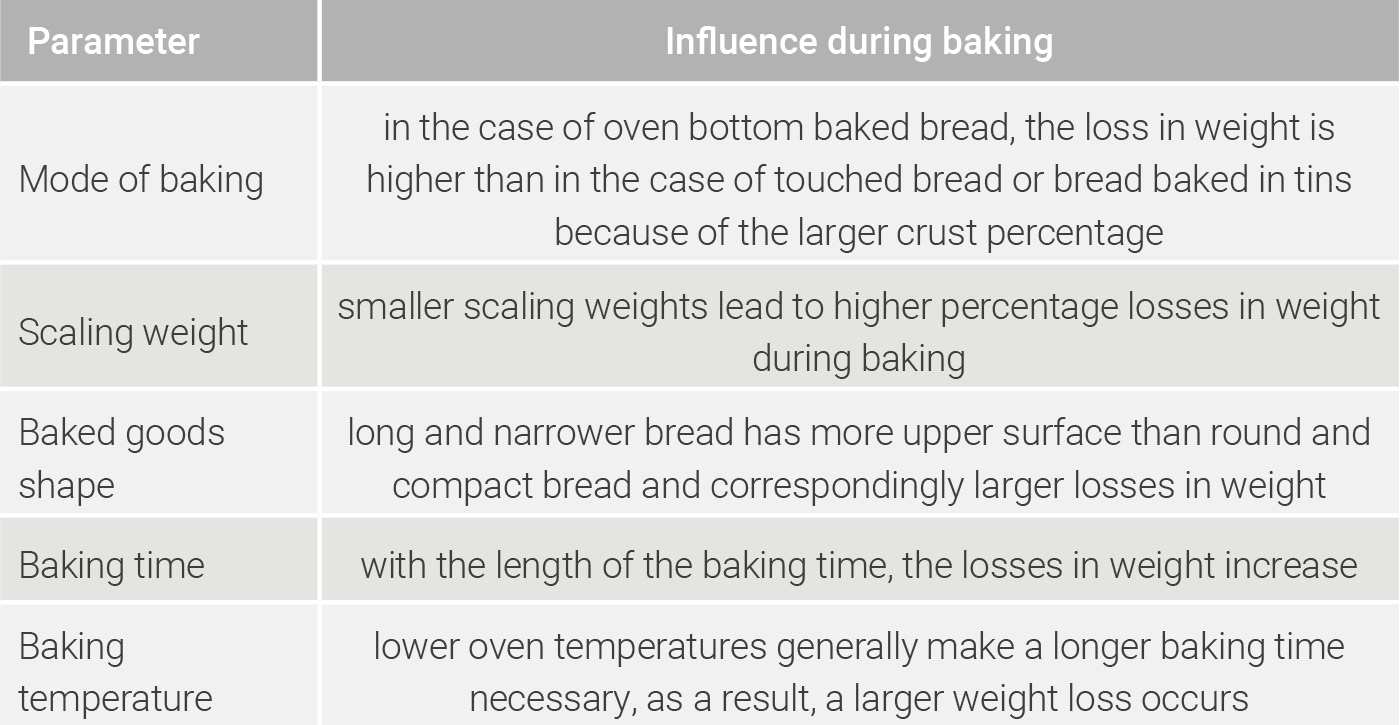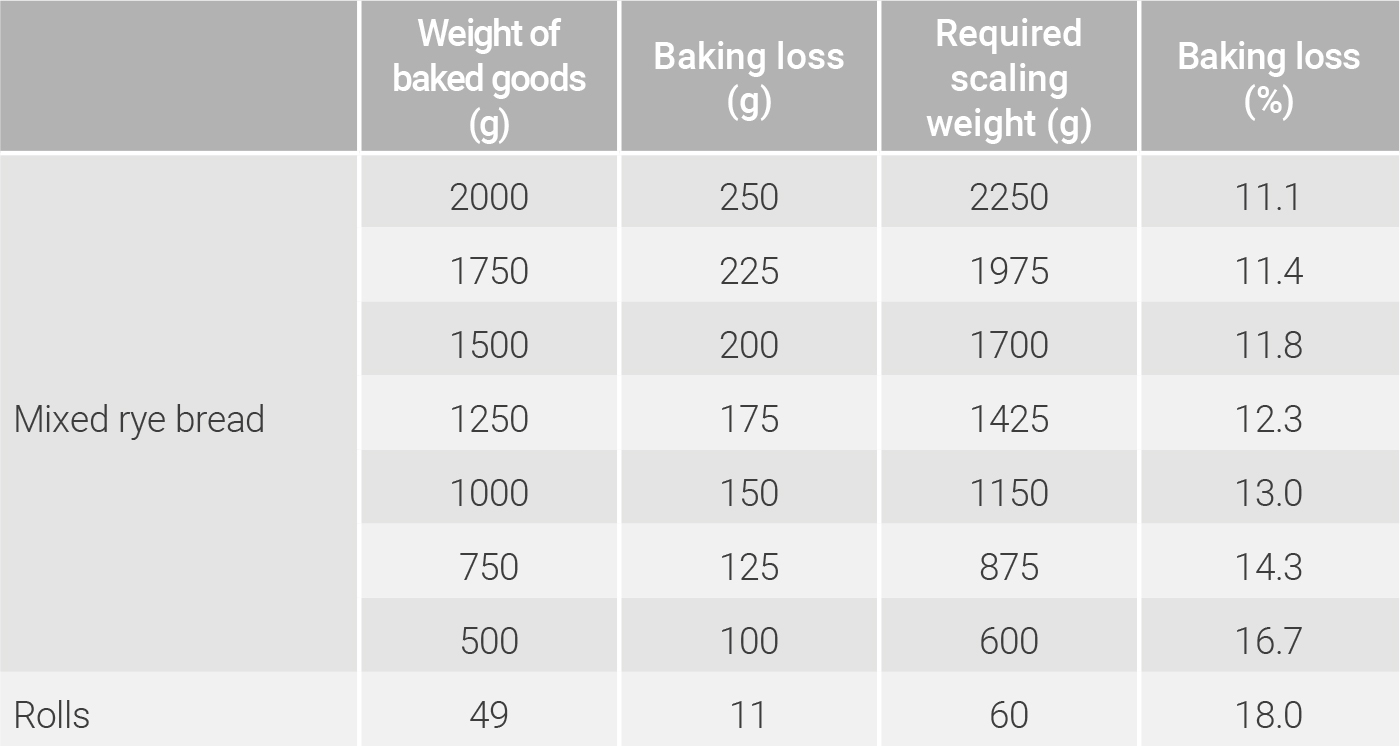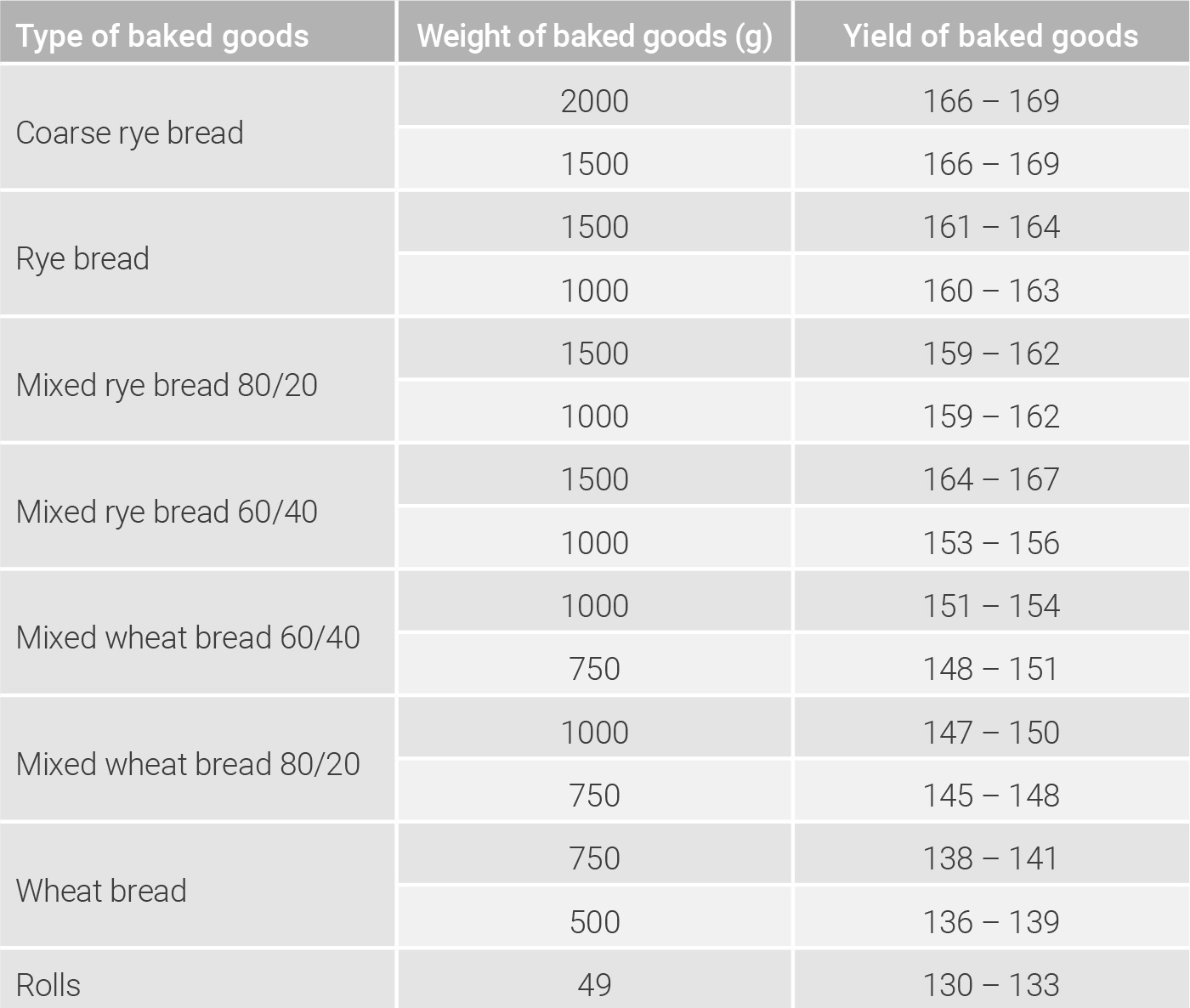Scaling weight
Every dough piece loses weight during baking, for this reason, for every loaf, so much more dough has to be scaled than the loss of weight during baking. The losses of weight are no set values. In fact, they fluctuate depending on several parameters.
Baking loss
Baking loss means the loss in weight of the dough pieces and bread during baking and cooling as a result of the evaporation of volatile substances, mainly water and, in low quantities, alcohol. The baking loss is relatively high in smaller pieces of baked goods, as these have a large upper surface.
Guiding values for average losses of weight when baking and the resulting scaling weights are shown in table 13.4. Depending on the individual conditions in the company, the necessary scaling weights are still to be adjusted to achieve exact weights of bread.





